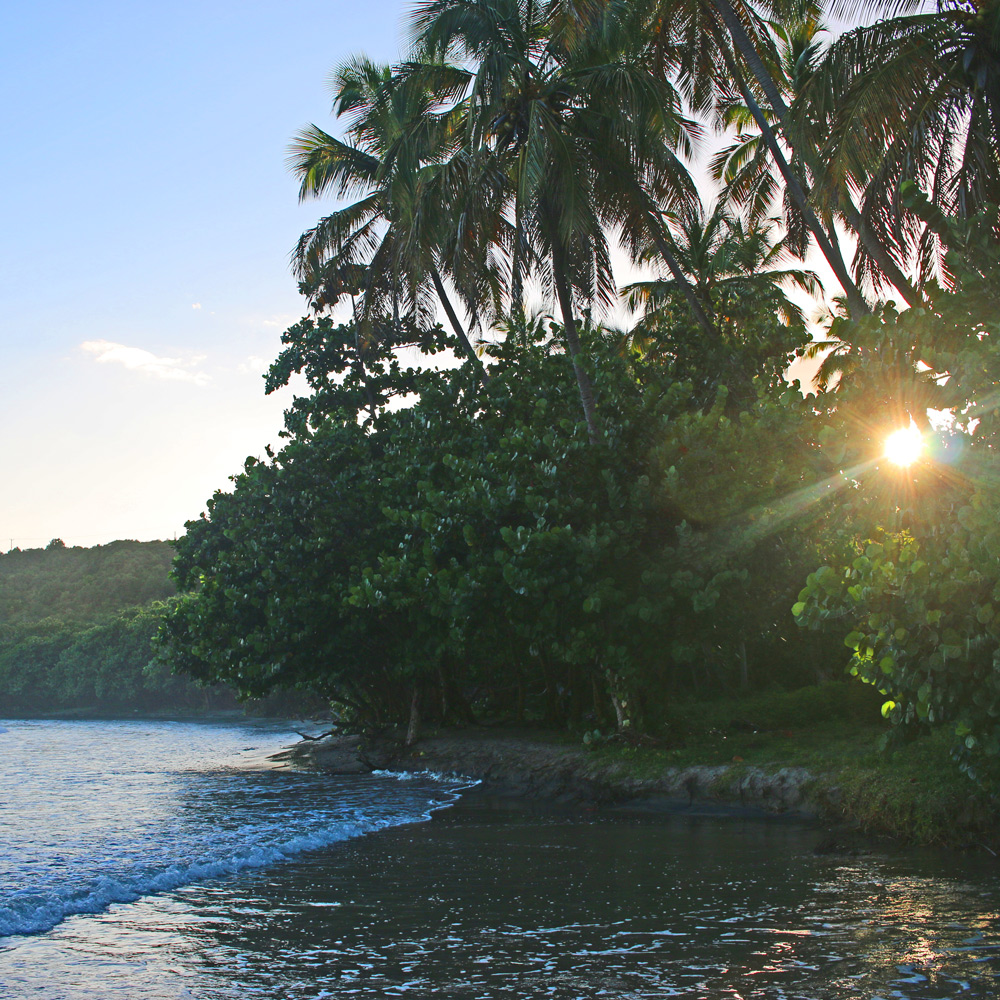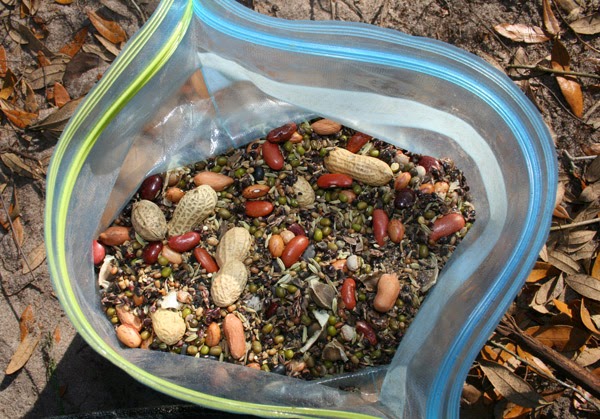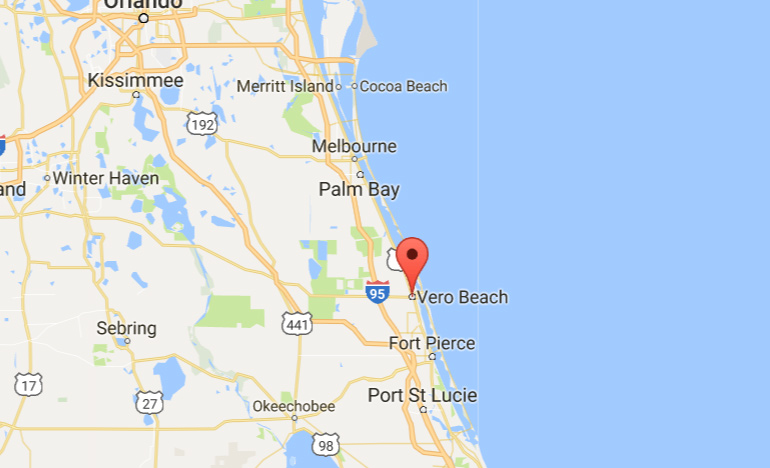Don wonders about tropical gardening in Vero Beach:
“Hi David,
I recently moved to Vero Beach, and was delighted to find that we are in a 10a climate zone. I heard that Vero is in a microclimate area. You;d you consider this to be a tropical zone? or one that may be open to setting up a system where we may be able to push toward a 10b or even an 11a depending on how we set up our garden?
I am currently on 5 acres, and I am mulching over about 2 1/2 acres of it. I plan on planting fruit trees in just about 3 weeks.”
You are in a great place, Don. Gardening in Vero Beach is life on the easy setting.
Vero’s climate is close enough to the tropics that you’ll be able to plant an abundance of species that people an hour inland from you would struggle to grow.
2.5 acres is a ton of space, too. With Vero Beach’s mild, year-round growing season you’ll be raking in produce if you plan well. Even if you don’t, it will be hard to fail.
Though zone 10a suffers through occasional freezes, the close proximity of the ocean keeps them rare and brief.
The Power of the Ocean
As I write in Push the Zone: The Good Guide to Growing Tropical Plants Beyond the Tropics:
“If you live near the coast, consider yourself blessed. The climate of Jacksonville (Northeastern Florida) is comparable to that of Groveland, despite the former being located farther north. This is why there are coconut palms growing inside Tampa bay but not in Orlando.
Like the barrels of water in my greenhouse, the ocean functions as a huge repository of warmth on chilly nights. The farther you get away from the ocean, the worse the overnight lows become—and the hotter the summer highs. The center of the state of Florida is a ridge with rolling hills and little to moderate the heat of summer or the cold of winter. In my previous location south of Gainesville, I could drive an hour east or an hour west and see a lot more tropical foliage growing than would survive on my homestead.
More than one person in the Ocala area told me “I could never live in South Florida—it would be way too hot.” I’d just laugh. I grew up in Ft. Lauderdale and I can tell you from experience: it never, ever gets as hot there as it does during the middle of a Central Florida summer. The ocean keeps it both cooler and warmer. Where I currently live in the tropics is even milder. Temperatures normally range between 74 and 87 degrees, even though you’d think its equatorial location would lead to sweltering misery.

If you’re not tied to a particular location, you have a few options in finding a place where you can grow warmer climate plants outside with little or no protection. You can move southwards towards the equator… you can move into a warm, urban area… or you can move towards the coast. Heck, you could combine all three and move to Miami; however, the crime rate down there takes some of the fun out of gardening. There’s nothing that dampens horticultural enthusiasm like having some hoodlums steal all your mangoes or break into your tool shed three times in one week. No fun.
Getting close to the ocean or into the city is more expensive than living in the country, unfortunately, which is part of why we moved into the middle of my home state. Land is abundant and the soil can be pretty decent by Florida standards, depending on where you settle.
If you already live in the city, I recommend trying some trees and plants from farther south. Patios and pool areas are excellent for planting small fruit trees. If you’re in an apartment, try growing some tropical plants in large pots on your deck or garden area.
I’ve seen queen palms growing in North Florida between an apartment wall and a pool. If those palms were planted out in the open, they would be toasted by frost. By the building, in that urban heat sink along with the additional thermal mass of a big swimming pool they looked as happy as if they were in Tahiti.
The way to find out what works is to plant a lot of things and see how they do in your area. I’ll bet there are places in your yard right now that are warmer because of their location.
I once visited a friend about seventy miles east of my old house in Marion County. He lives in Ormond Beach, right near the ocean, which was actually a little north of me. In his neighborhood people were growing royal poinciana trees and sea grapes—both decidedly tropical species. The ocean made all the difference.”
Mangoes: The Tropical Canary
One of the species I look for to determine if an area is tropical enough to grow plenty of tropical fruit is the mango.
So – can mangoes grow in Vero Beach?
Yep!
Though the frosts will remove fruit from mango trees in some years, you will have great success in other years.
If the property you are developing has established trees – no matter what the species – they will help moderate the climate. If it is a wide open space, I recommend planting fast-growing species as quickly as possible to help moderate the climate and protect your tropical trees from the cold.
One of my favorites is the guanacaste tree, AKA enterolobium.
You don’t have to let them get huge, you just want to get some canopy edges that will help hold in warmth on a frosty night. Slowing the movement of cold air helps as well, so hedges, fences, buildings – think about where they are or where they could be. South-facing walls will create fully tropical microclimates along their sides.
But… as mangoes already grow in Vero Beach, your work is much easier than mine was in North/Central Florida.
Tropical Fruit for Vero Beach
Here are some species I would definitely hunt down and plant:
Chocolate Pudding Fruit / Black Sapote
Starfruit
Lychee
Papaya (easy to grow from seed)
Mulberry
Loquat
Cashew
Cattley Guava
Tropical Guava
Cherry of the Rio Grande
Jaboticaba
Canistel
Bananas (many types!)
Barbados Cherry
Pineapples
Tamarind
Fig
Olive (Arbequina)
There are many more options as well. More “tender” trees could be planted after these somewhat frost-tolerant trees get established. The collective canopies will create a warmer microclimate in your yard over time.
Covering the Area
One mistake I made at the beginning of my food forest process was not planting enough nitrogen fixers and plants to keep the ground covered.
Most of Florida wants to be forest. If you put down that mulch – plant more species in it that will keep life in the soil and provide you with new mulch material. If you have pain-in-the-neck invasive species, like Brazilian pepper, I would chop and drop it, but not kill it right away. If you keep it cut it won’t seed and you can use the limbs and leaves as mulch around other trees.
For quick ground-covering species I like cassava, Tithonia diversifolia, pigeon peas, black-eyed peas and big crazy seed mixes.

The more life you get going on the sand, the better.
Perennial peanut is also a very nice ground cover for orchards and food forests.
Frost Protection
Little trees are very susceptible to overnight lows. Go to the local thrift store and buy cheap blankets and sheets and be prepared to cover those trees for at least the first few winters. If you keep them fed and watered well during their first few years, they’ll soon get big enough to live through a cold night, usually with minor damage. I have a lot more ideas in Push the Zone, but the bare bones of it is: baby young tropicals and they’ll take care of themselves in adulthood.
Vegetable Gardening in Vero Beach
My recommendations for top crops as shared in Totally Crazy Easy Florida Gardening hold firm for Vero Beach. Start with tough stuff that handles the humidity and the sand and move out from there.
African Yams
Sweet Potatoes
Cassava
Pigeon Peas
Yard-long Beans
Black-eye Peas
Seminole Pumpkin
Mexican Tree Spinach
Longevity Spinach
Malanga
Those will get you started and will do great – and there are many more options as well. Beefsteak tomatoes are tough, but Everglades tomatoes are easy. Get the forgiving plants growing first and making you food, then branch out.
I also encourage you to hunt down tropical fruit growers and enthusiasts in your area. Visit the local agricultural extension. Drive around town and any time you spot a tropical fruit tree, see if you can meet the owner and talk to him about how it has done over the years.
Good luck, Don, and if you have any more questions – shoot them my way and I’ll help as best as I can.
*Map image via Google Maps


11 comments
There is a very active tropical fruit growers club in that area. My brother-in-law had a lovely tropical fruit orchard with multiple mango varieties, cashews, carambola, and guava in Sebastian.
Hey Don,
I am doing something similar on 5 acres in the Fellsmere area NW of you. I have lots of plants that you can get cuttings from and seeds that will be very useful and grow very easily in mulch. I would love to see what you are planning on doing with the 2.5 acres and would be glad to share some of the experiences I have had growing in wood chips in a similar area.
Fantastic! We are now sptreading mulch like crazy! About 18 inches for our larger open areas. I would love to see what you have going on in fellsmere. I am fairly new to this… ;)
Our website is acts2school.com. It has an Arial view of the property…
Hi Frank,
I would still like to connect with you if you are in the Fellsmere area. Feel free to contact me at: don@acts2school.com. WOuld love to see how your farm is doing!
Thanks David! I picked up your books on Amazon, and the is how I found you ;)
Thanks David. I picked up your books on Amazon, and the is how I found you ;)
Hi Frank,
If you contact us via our website, I would love to connect with you.
What would be a good flowering plant for a western exposure?
For a wall mounted planter?
Hard to beat Madagascar periwinkles.
Comments are closed.